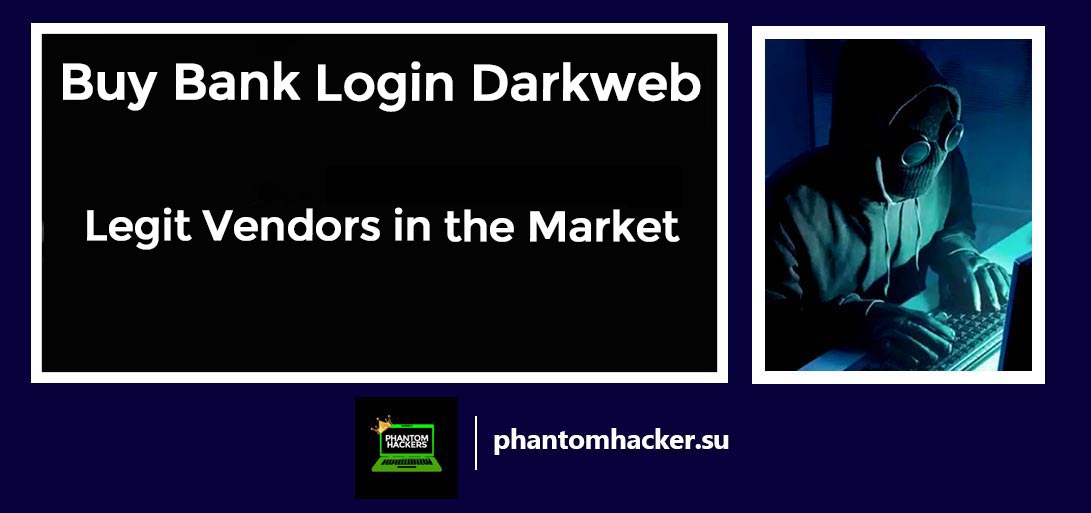In the digital age, the dark web has become a clandestine marketplace for various illegal activities, and one of the most prominent among them is the sale of bank login credentials. Criminals target unsuspecting individuals, attempting to steal their personal and financial information for nefarious purposes. As a savvy internet user, it’s crucial to be aware of the risks and learn how to identify legitimate vendors from the scams on the dark web. In this comprehensive guide, we will explore the world of instant buy bank login credentials on the dark web, shedding light on how to spot legitimate vendors in this treacherous market.
Understanding the Dark Web
Before we dive into the specifics of spotting legitimate vendors, it’s essential to grasp what the dark web is and why it exists. The dark web is a hidden part of the internet that is not indexed by search engines like Google. It is intentionally designed to provide anonymity to users and is often accessed using specialized browsers such as Tor.
The anonymity of the dark web has made it a breeding ground for illegal activities, including the sale of stolen bank login credentials. These credentials grant access to someone’s financial accounts, making them a valuable commodity for cybercriminals.
Identifying Legitimate Vendors
When navigating the dark web, it’s crucial to exercise caution and skepticism. Not all vendors are what they claim to be, and falling victim to a scam can have severe consequences. Here are some tips on how to spot legitimate vendors in the market for instant buy bank login credentials:
1. Reputation Matters
Legitimate vendors often have a reputation within the dark web community. Look for reviews and feedback from previous customers. Reputable vendors will have positive reviews and a history of successful transactions. Be wary of vendors with no reviews or a negative reputation.
2. Verify Their Offerings
Scammers often make extravagant claims about the bank login credentials they are selling. Before making a purchase, ask the vendor for details about the accounts they are offering. Legitimate vendors can provide specific information about the accounts, such as the bank’s name, account type, and available balance.
3. Communication Is Key
Engage with the vendor through secure channels like encrypted messaging apps. Legitimate vendors will be responsive and willing to answer your questions. If a vendor is unresponsive or insists on using unencrypted communication methods, it’s a red flag.
4. Use Escrow Services
Escrow services act as intermediaries in dark web transactions. They hold the funds until both parties fulfill their obligations. Legitimate vendors often prefer using escrow services as they provide a level of security for both buyers and sellers. Avoid vendors who refuse to use escrow.
5. Be Cautious of Too-Good-to-Be-True Deals
If a deal appears too good to be true, it probably is. Scammers often lure victims with unbelievably low prices or promises of guaranteed success. Exercise caution and trust your instincts.
6. Research the Vendor’s History
Before making a purchase, research the vendor’s history on dark web forums and marketplaces. Look for any reports of scams or fraudulent activities associated with their username.
Staying Safe on the Dark Web
While it’s essential to know how to spot legitimate vendors, it’s equally important to emphasize the importance of staying safe while exploring the dark web. Here are some additional tips:
1. Use a Secure and Updated Browser
Always use a secure and updated browser like Tor when accessing the dark web. This browser is designed to provide anonymity and protect your identity.
2. Employ a VPN
Consider using a Virtual Private Network (VPN) in conjunction with Tor for an added layer of security. A VPN can help mask your IP address and further protect your identity.
3. Avoid Sharing Personal Information
Never share personal information, such as your real name, address, or phone number, on the dark web. Assume that everyone you encounter is potentially malicious.
4. Regularly Update Your Security Software
Ensure that your antivirus and anti-malware software are up to date. Cyber threats are constantly evolving, and regular updates are essential for protection.
5. Be Skeptical of Links and Downloads
Avoid clicking on random links or downloading files from untrusted sources. These could contain malware or lead to phishing attempts.
Conclusion
Navigating the dark web can be perilous, especially when seeking instant buy bank login credentials. However, by following the guidelines outlined in this article, you can increase your chances of identifying legitimate vendors and protecting yourself from scams. Remember that caution and vigilance are your best allies in this shadowy digital realm.
So, whether you’re a cybersecurity enthusiast or merely curious about the dark web, keep these tips in mind as you venture into this mysterious corner of the internet. Your online safety and security should always be your top priority.




